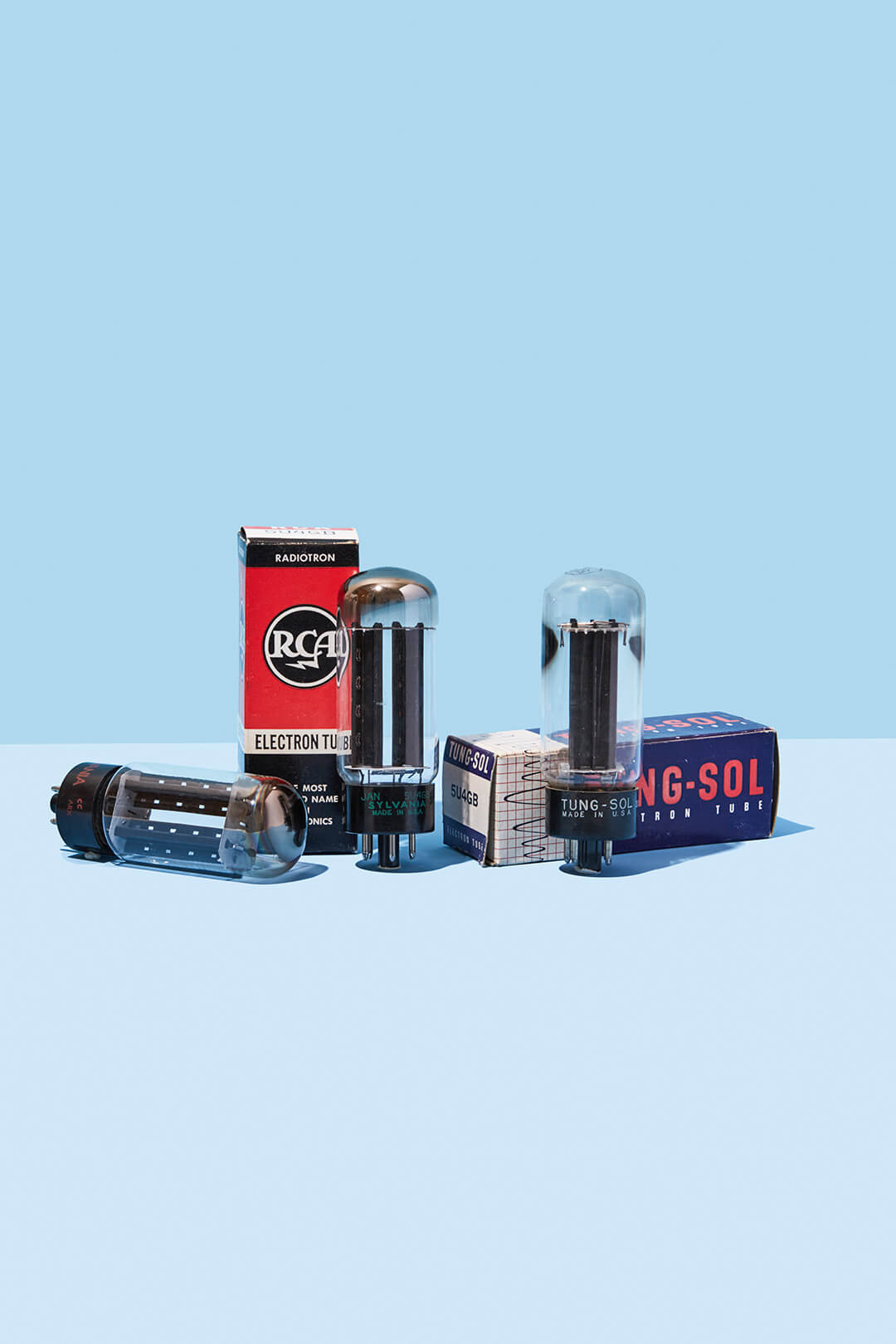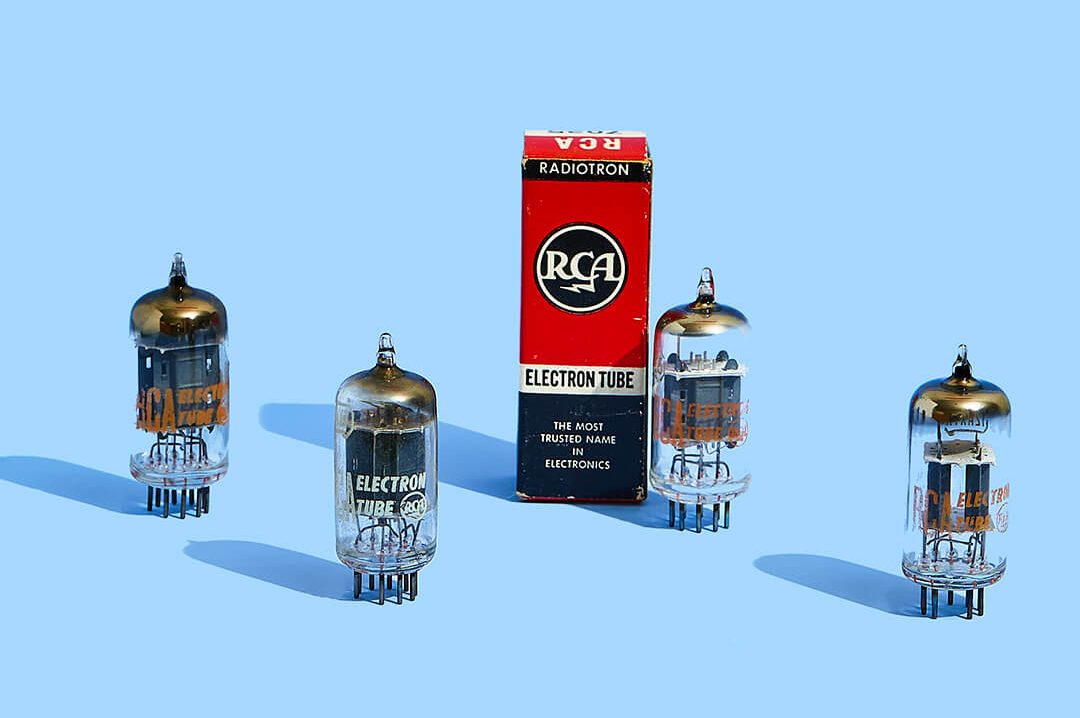If you have fallen down the rabbit hole of NOS tubes and vintage tube gear you have most likely started to wonder what all the fuss is about when it comes to vacuum tube test scores.
With large discrepancies in pricing along with the large amount of amateur tube sellers on the web, understanding tube test scores can be the difference between adding an amazing valve to your collection and wasting $100.
Most of the time, customers need to know two things:
One would think this is where tube test scores come in, right?! Well, it depends on the tube!
Knowing how a tube “tests” or “performs under load” is more important for some tube types and situations than others. For rectifier and preamp tubes, test scores are relatively unimportant for basic function, and tubes of different scores can be swapped in and out without consequence (as long as they are working tubes). On the other hand, for power tubes, healthy matching scores can be crucial to your amplifier’s performance.
Here is a breakdown by tube type of what to look for when assessing a vacuum tube’s usability:

Rectifier tubes are simple in function and therefore the simplest/easiest tube type to test.
To understand a rectifier tubes health you need:
This may sound complicated, but these tests are pass-fail, and are quick and easy to complete.
For example, an emission test is analogous to checking the filament on a lightbulb. If the filament is intact you get a “good” reading and if the filament is blown you get a “bad” reading.
Rectifier are the only tube types that can be determined “good” through emissions testing. For power and preamp tubes, emissions tests are inadequate as they are more complicated in function and design.
It should be noted that all tubes should be checked for shorts and leakage.
Contrary to popular belief, preamp tubes are not nearly as finnicky as consumers and bloggers suggest when it comes to testing, matching, and lifespan.
With a preamp tube we need to know two things (after shorts and leakage tests):
For guitar and audio applications where you do not need matched sets of preamp tubes, simply knowing whether or not a tube is noisy is half the story to understanding a preamp tube’s health and usability. Knowing a tube’s transconductance or gain is the other half. If you have a preamp tube that is quiet in a sensitive audio device and has a transconductance or gain anywhere in the passing range, you can assume the preamp tube is 100% healthy.
Does my preamp tube have 100% life?
Unfortunately, we have noticed that many tube consumers and sellers equate the strength of tube test values to the life of a preamp tube and/or use conductance scores to explain how a tube will behave in a given amplifier, and this is simply not true. Preamp tubes of the same type can have a wide variety of healthy gain and transconductance scores. For example, vintage Tung-Sol 12AX7’s often have lower “NOS” Gm scores, while Sylvania 12AX7’s score off the chart. Does one type have more life than the other? No!
Typically, the reason a preamp tube fails is due to shock, vibration over time, or overheating. Preamp tubes rarely wear out the way we think of a lightbulb filament wearing out, and healthy preamp tubes should last a lifetime or even many lifetimes with consistent use (if kept in the right conditions).
A few things to note with preamp tubes:
Some high-end audio amplifiers and studio recording equipment require matched sets of preamp tubes. For the most sensitive of these applications you need gain matched sets. When you match by gain, you are guaranteeing the output signal strength from each tube is equal. This cannot be achieved by matching by transconductance.
Fuzz Audio tests all preamp tubes for shorts, leakage, transconductance, gain and noise.

Power tubes are the only tube types where we really need to pay attention to actual tube test values. This is because if you run a power tube too hot (in temperature) you can decrease its life span. Conversely, if you run a tube too cold it can make your amp sound weak, brittle, and just plain bad.
The catch is that not all amplifiers run tubes at the same plate voltage. Plate voltage has an affect on plate current (mA), which we need to pay attention to when making sure an amp and tubes are running in the optimal range (i.e. not too hot and not too cold). Therefore, we need to understand how a given power tube will respond at many different plate voltages and bias settings. Curve tracers are ideal here.
So how do I know if power tubes are healthy?
You can calculate “healthy” plate currents by understanding that:
Amps (mA) x Plate Voltage = Wattage (don’t forget to convert milliamps to amps)!
Each power tube has a maximum wattage rating. As a tube’s wattage increases the wear on the tube becomes greater and the lifespan of the tube decreases.
All in all, with power tubes, you need to have a source that knows how to test tubes accurately, and you may need that supplier to be familiar with your amp model as well. Otherwise, you need to know your amp’s operating conditions, and how the prospective tube will perfom under those conditions. Even for experts, there may be some trial and error required.
For rectifier and preamp tubes, unless you need matched sets or tube sections, do not let specific tube test score readings bog you down. Unless the tester is very advanced, the scores do not accurately represent how the tube will function in your device. Instead, make sure that preamp tubes have passed a noise test and make sure rectifiers have passed an emissions test (on a calibrated machine).
Replacing power tubes and understanding “healthy” scores can be more complicated. In short, you must respect the maximum wattage rating of your power tubes, while also making sure they are biased in an optimal range to “sound good” in your amp. You may need to read your owner’s manual or reach out to an expert if you have questions about your specific power tube application.
You can reach us anytime at Support@FuzzAudio.com or call or text 720-505-3927.